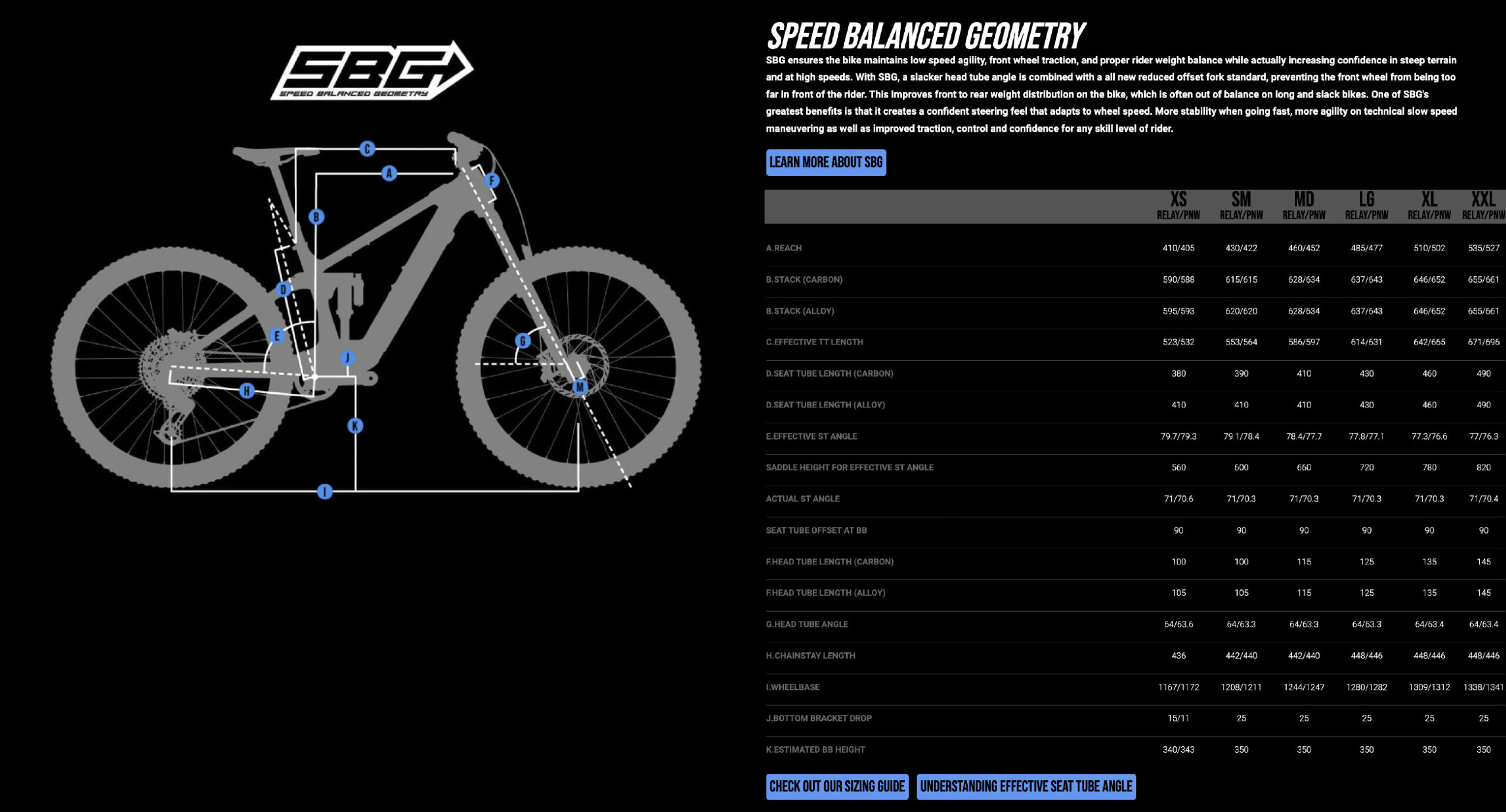Transition Relay
Wheel Size: 27.5’’ (Size XS); 29’’ front / 29” or 27.5’’ rear (Sizes S–XXL)
Travel: 160mm or 170mm rear / 160mm or 170mm front
Geometry highlights:
- Sizes offered: XS, S, M, L, XL, XXL
- Headtube angle: 64°
- Reach: 485 mm (size Large)
- Chainstay length: 448 mm (size Large)
Frame material: Aluminum and Carbon versions available
Price:
- Alloy Complete bikes: $6,799 to $7,999
- Carbon Complete bikes: $8,799 to $12,499
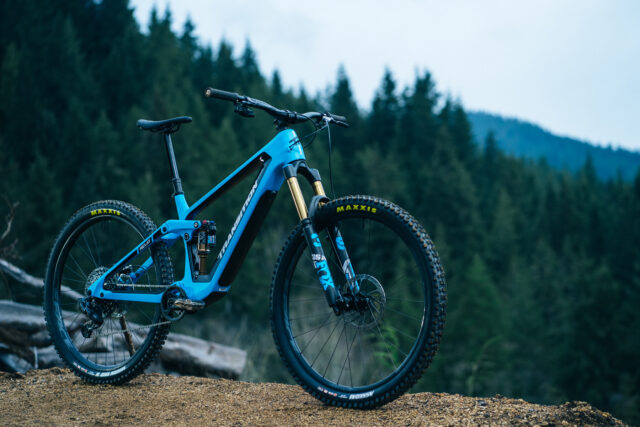
Intro
Transition’s second e-bike (which they teased a while back) has fully broken cover, and the big news here is that it’s actually two bikes in one. The Relay is not just a bike with adjustable geometry offering different trail personalities (which it also does), but it’s both an e-mountain bike and a mountain bike in the same modular package. Technically, you could argue that it’s more like eight bikes in one when you consider the different travel and mixed wheel size options, then multiply by two for electric versus non-electric. Factor in all this modularity and adjustability with both alloy and carbon options, and you have a bike that has a whole lot going on, so let’s dive in.
The Frame
The overall lines of the Relay are quite similar to those of most of Transition’s current models, albeit with a slightly girthier downtube and bottom bracket area, to make way for the battery and motor. And speaking of, that drive unit is the same Fazua Ride60 unit that we’ve seen popping up on a number of recent e-bikes. But what’s most interesting about the arrangement on the Relay is that it’s designed to be ridden as a conventional mountain bike with the battery removed, if you’re so inclined.
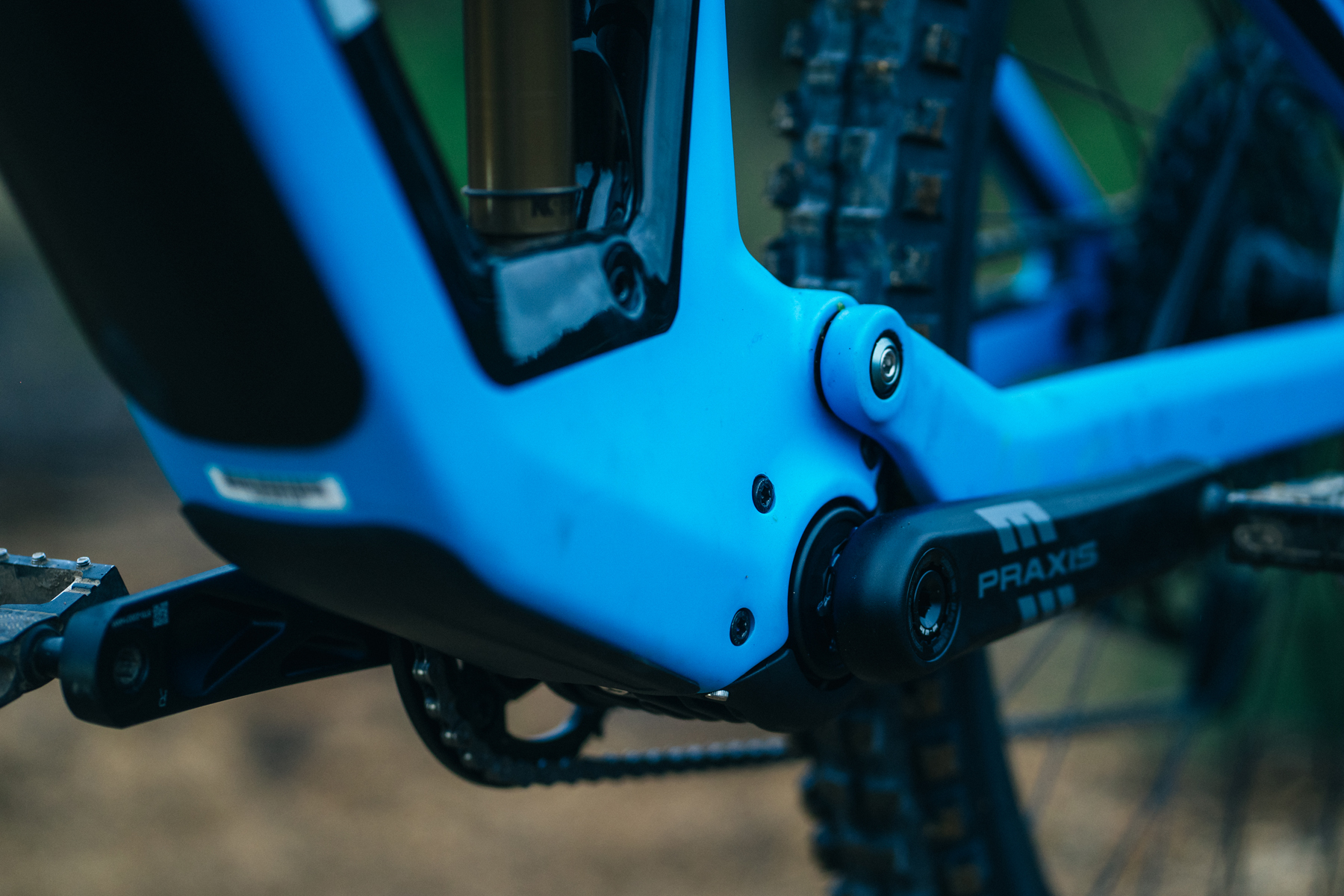
Of course, you’ll still be dragging around the extra weight of the motor in that configuration (stated at 4.3 lb / 1.96 kg), but at least the 430 Wh removable battery (claimed weight 4.85 lb / 2.2 kg) will be out of the picture. In the e-bike configuration, 60Nm of supplemental torque is available, with a continuous power output of 250 watts, with 450 watts of peak power available for short bursts. Three assist modes are selected via a “ring controller” on the left side of the handlebar, and a battery display in the top tube indicates the remaining power levels. The battery takes no tools to remove and is charged off the bike, which Transition says should make things easier for some folks without easy charging infrastructure in their bike storage areas.
Transition doesn’t list a stated weight for the Relay, so we’re quite curious to see how the actual weights shake out, and just how competitive the Relay can be as a conventional MTB.
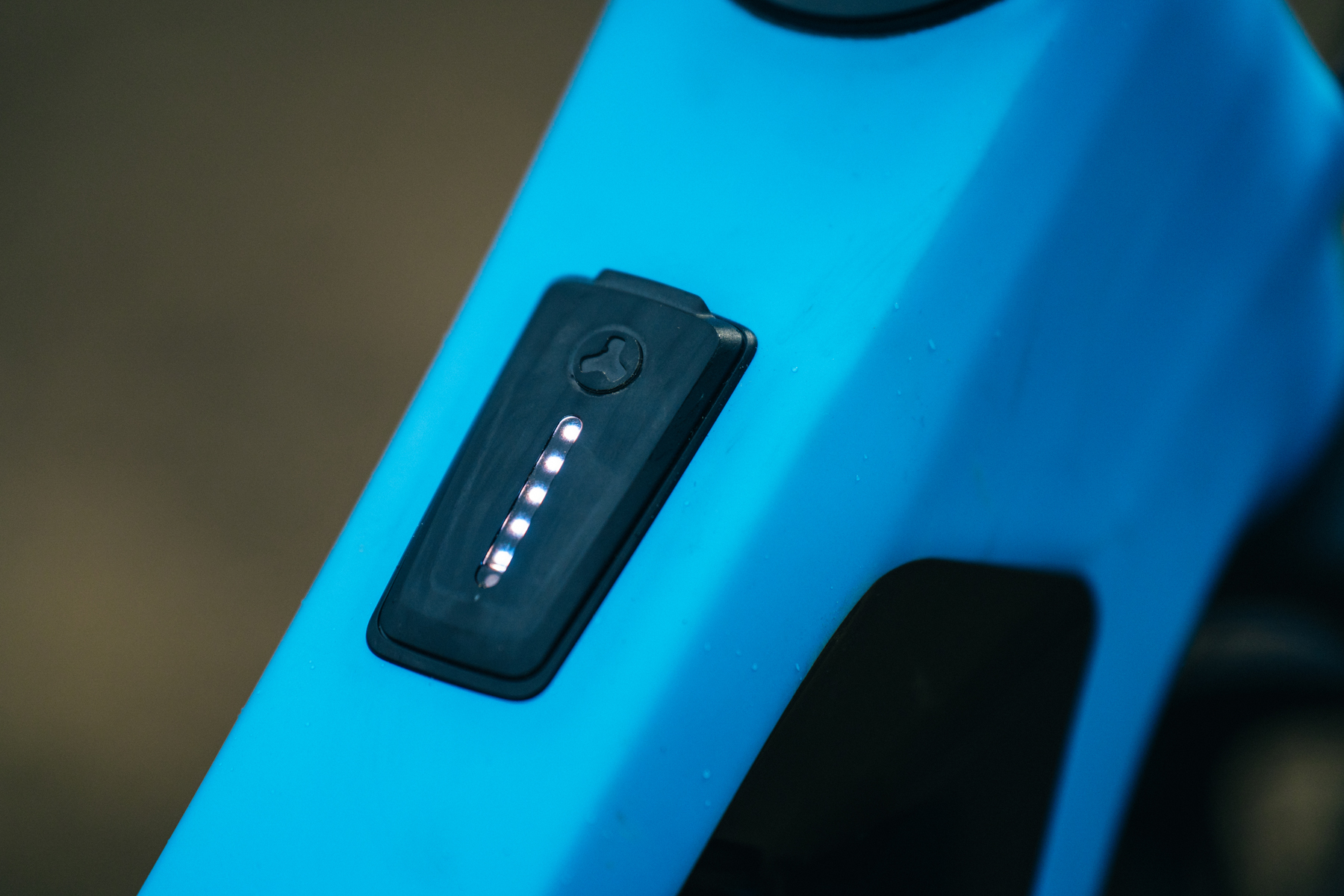
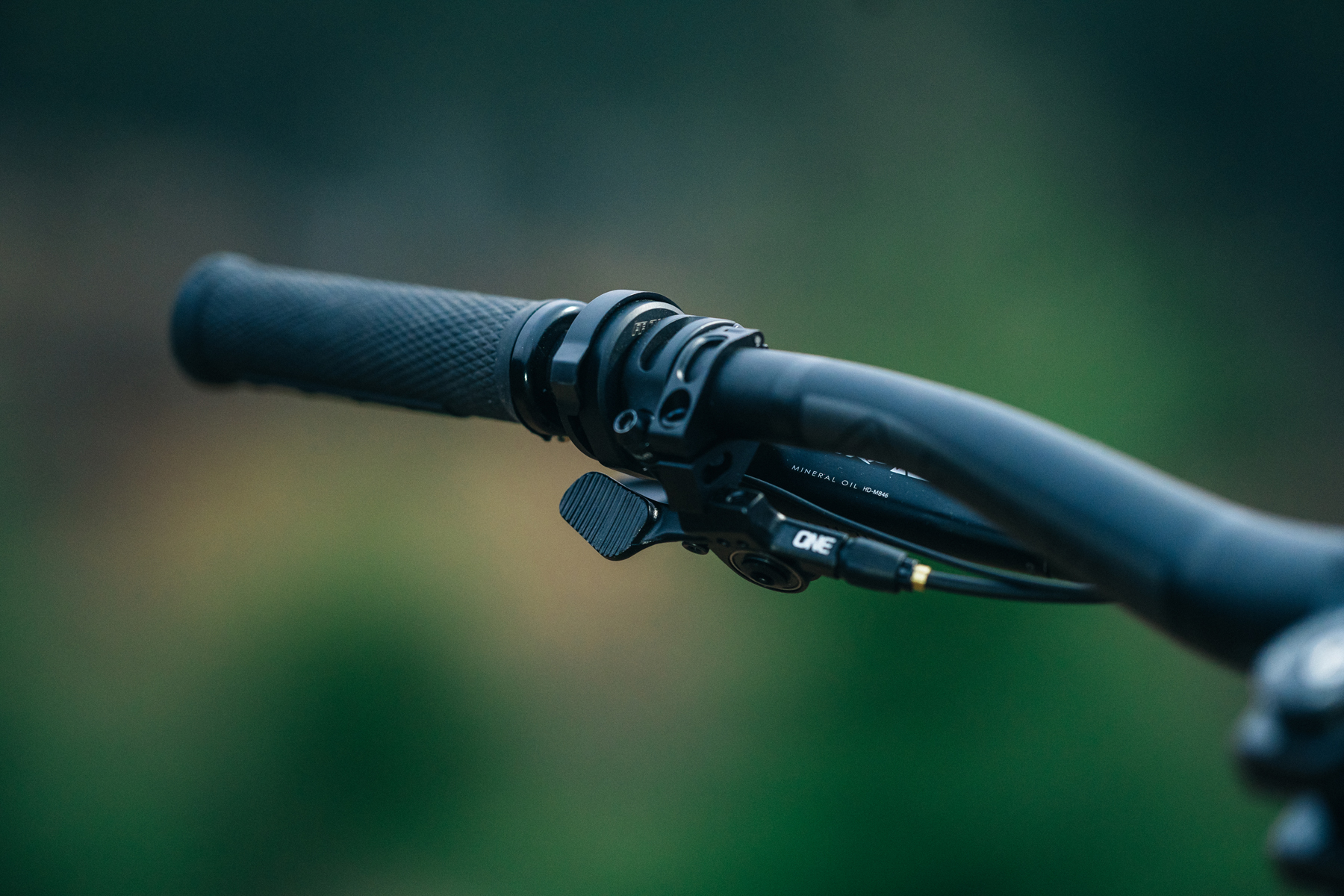
As per usual for Transition, the Relay uses a Horst link suspension layout with a vertically oriented shock, delivering 160 or 170 mm of rear wheel travel depending on the shock stroke used, and Transition says that the linkage delivers 26% total progression, for compatibility with air and coil shocks. A flip chip at the lower shock mount toggles between two geometry settings (which is primarily used to toggle between rear wheel sizes — more on that in a minute).
Other notable frame details include an uninterrupted seat tube for long travel dropper posts, a SRAM Universal derailleur hanger, fully internal cable routing with access from the battery compartment and headtube ports, and room for one normal-sized water bottle inside the front triangle (although it’s a little tight on the XS and S sizes, requiring a Fidlock 450ml bottle). Last but not least, it will be available in both alloy and carbon.
Fit & Geometry
Thumbs up to Transition for offering six sizes, XS through XXL, so just about everyone should be able to find a suitable size. The XS frame gets dedicated 27.5’’ wheels, but the rest of the size range can be run with either a 27.5’’ or 29’’ wheel in the back, paired with a 29’’ one up front. Chainstays are size specific with the XS coming in at 436 mm. Small and Medium frames grow to 442 / 440 mm (29’’ or 27.5’’ rear wheel), and Large through XXL share 448 / 446 mm stays. The headtube angle comes in around 64° (varies slightly by build, see below). Seat tube angles are definitely on the steeper side, especially on the XS at over 79° but relax slightly by the time you get to the XXL at 77°.
As we’ve come to expect from Transition, the Relay is a fairly long, slack bike, though its headtube angle in particular is dialed back a bit as compared to the Spire. But the Relay still looks like it should be on the more stable, composed end of the spectrum, particularly as compared to a lot of the other lightweight, lower-powered e-bikes that we’ve seen cropping up lately, such as the Pivot Shuttle SL.
The Builds
Transition offers six different builds on the Relay, with the “PNW” builds coming configured with mixed wheel sizes (apart from the XS size, which gets dual 27.5’’ wheels regardless), 170 mm of travel at both ends, and a generally burlier parts spec than the standard Relay, including a coil rear shock, Fox 38 fork, bigger brakes, and so on. The frames are the same irrespective of build spec, though, with the travel change coming by way of altering the shock stroke, and between that and the geometry-adjusting flip chip, it’s possible to configure either spec with your choice of rear wheel size (again, size XS excepted) and either of the travel options.
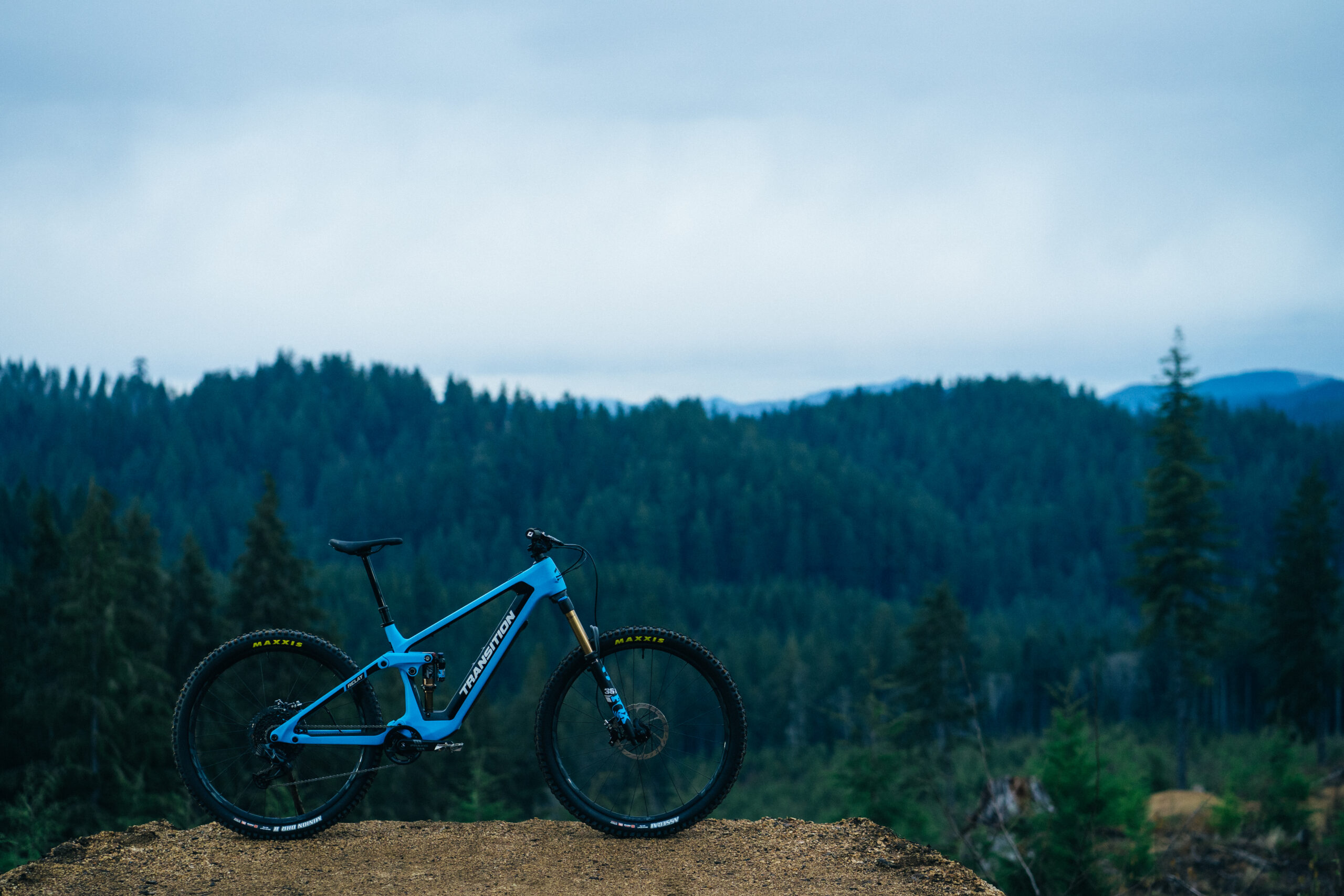
- Drivetrain: SRAM GX with NX shifter
- Brakes: SRAM Code R
- Fork: Marzocchi Z1 Air
- Shock: Fox Float X Performance
- Wheels: Novatec Hubs with WTB i30 rims
- Dropper Post: OneUp (XS: 120mm; S: 150 mm; M: 180 mm; L–XXL: 210 mm)
- Drivetrain: SRAM GX
- Brakes: TRP DH-R EVO
- Fork: Fox Float 38 GRIP 2 Performance Elite
- Shock: Fox DHX Coil Factory
- Wheels: RaceFace Trace Hubs with Aeffect R rims
- Dropper Post: OneUp (XS: 120mm; S: 150 mm; M: 180 mm; L–XXL: 210 mm)
- Drivetrain: SRAM GX
- Brakes: SRAM Code R
- Fork: Fox 36 Float Performance
- Shock: Fox Float X Performance
- Wheels: Novatec Hubs with WTB i30 rims
- Dropper Post: OneUp (XS: 120mm; S: 150 mm; M: 180 mm; L–XXL: 210 mm)
- Drivetrain: SRAM GX AXS
- Brakes: SRAM Code RSC
- Fork: Fox 36 Float Performance Elite
- Shock: Fox Float X Performance Elite
- Wheels: RaceFace Trace Hubs with Aeffect R rims
- Dropper Post: OneUp (XS: 120mm; S: 150 mm; M: 180 mm; L–XXL: 210 mm)
- Drivetrain: SRAM XO AXS
- Brakes: TRP DH-R EVO
- Fork: Fox 38 Float Grip 2 Factory
- Shock: Fox DHX Coil Factory
- Wheels: RaceFace Trace Hubs with Aeffect R rims
- Dropper Post: OneUp (XS: 120mm; S: 150 mm; M: 180 mm; L–XXL: 210 mm)
- Drivetrain: SRAM XX1 AXS
- Brakes: SRAM Code RSC
- Fork: Fox 36 Grip 2 Factory
- Shock: Fox Float X Factory
- Wheels: RaceFace Trace Hubs with Aeffect R rims
- Dropper Post: OneUp (XS: 120mm; S: 150 mm; M: 180 mm; L–XXL: 210 mm)
Some Questions / Things We’re Curious About
(1) The big, and most obvious, question is how is the Relay going to pedal with the battery removed in non-electric bike mode? Will there be noticeable drag or other issues, since the motor is still installed?
(2) And, can the Relay realistically be your only bike if you ride equally between e-MTBs and MTBs?
Bottom Line (For Now)
Transition isn’t the first company to offer a lightweight, lower-powered e-bike (though we’re curious to see just how light the Relay actually is), but their take on the genre is awfully interesting, with the option of riding it sans battery as a regular MTB, and because it’s a longer-travel, more aggressive bike than most of the other lightweight e-bikes that we’ve seen to date. We’re working on lining up a Relay to review, and hope to be able to find out a lot more soon.

